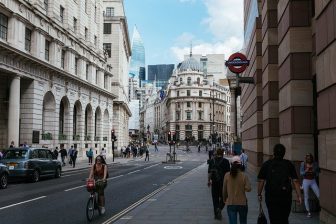 There are promising signs for rate watchers hoping for an earlier interest rate cut, with new data pointing to a cooling economy.
There are promising signs for rate watchers hoping for an earlier interest rate cut, with new data pointing to a cooling economy.
UK inflation has fallen to its lowest level in two and a half years, as price pressures continue to ease.
The consumer prices index has dropped to 3.2% in March, the lowest since September 2021, down from 3.4% in February.
However, that is slightly higher than City economists expected – they had pencilled in a drop to 3.1%.
It brings inflation further towards the UK’s 2% target, and away from the 40-year peak over 11% in autumn 2022.
It means real wages are still increasing, as regular pay grew by 6% per year in the three months to February.
Economists expect a further decline in inflation in April, with potential to fall below the Bank’s 2% target after a sharp drop in household gas and electricity bills to the lowest level for two years.
Nathan Emerson, CEO of Propertymark, commented: “It is encouraging to see that inflation is starting to decline towards the same levels it was at prior to the Covid-19 pandemic. People will be relieved to start experiencing some normality again without fearing that prices will rise at almost unaffordable levels.
“When the Bank of England meets in May, we may see them begin to have the confidence to gradually cut interest rates in order to stimulate activity on the housing market during spring, traditionally one of the busiest times of the year for the housing market.”
The weakness in the wider UK economy has started to hit the jobs market, with separate figures from the Office for National Statistics (ONS) showing the unemployment rate has risen to an estimated 4.2%.
There are now around 850,000 additional working-age people out of work, who are no longer seeking work or are unable to start work, than before the COVID-19 pandemic began.
The unemployment-to-vacancies ratio, a key measure for the Bank of England, rose to 1.6 as unemployment increased and vacancies fell further.
And while pay growth remains stubbornly high – at 6% – the indications are that they are falling to more reasonable levels.
“High pay growth remains a key barrier to base rate cuts as the Bank of England expects it is contributing to inflation persistence,” said Jake Finney, economist at PwC UK. “However, the one upside is that households could see significant real wage growth on an annual basis this year for the first time since 2021.”
While UK interest rates are expected to fall this year, the International Monetary Fund (IMF) says they are unlikely to drop below 3.5% for at least four more years, the International Monetary Fund (IMF) has warned.
The IMF said that Britain’s inflation rate would soon hit its target of 2% with GDP growth among the highest of any major Western economy.
But it also concluded that GDP per person would grow more slowly than the US, Germany, France and Japan due to a rapid population increase fuelled by immigration.
A Treasury spokesman said: “We are winning the battle against high inflation, with the IMF forecasting that it will fall much faster than previously expected.
“The forecast for growth in the medium term is optimistic, but like all our peers, the UK’s growth in the short term has been impacted by higher interest rates, with Germany, France and Italy all experiencing larger downgrades than the UK.”


Comments are closed.